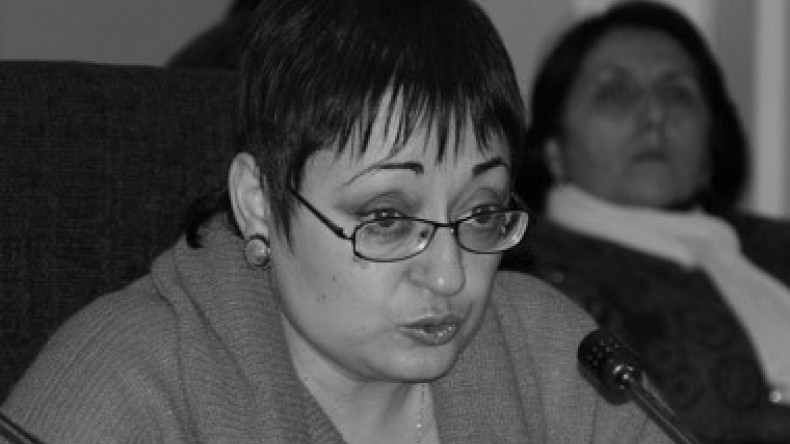
"The Ordinary Genocide": preparing a film for the 20th anniversary of Operation “Koltso” (Ring)
Another documentary is launched in the frameworks of the project "The Ordinary Genocide". The fourth project is dedicated to one of the most tragic pages in the history of the Karabakh movement - "Operation “Koltso” (Ring) the 20th anniversary of which will be memorialized in 2011.
“Operation "Koltso ", as a result of which the population of several tens of Armenian cities and villages of NKR and Shahumyan district were deported by force, was realized in April-July of 1991,” the project manager of the "The Ordinary Genocide” Marina Grigoryan says, “Unfortunately, just like in case of the tragedy of the village Maragha, this heinous act of governmental terror against thousands of Armenian villagers is little known even in Armenia itself. Meanwhile, it was a large-scale punitive operation by the Soviet Centre and the Azerbaijani special police detachments (OMON) realized against the civilian population, through which the Azerbaijani leadership sought to implement its sinister goals: i.e. the extermination and proscription of the Armenians from their historical residence, depriving them from their motherland. Moreover, few people remember today that the population of the border-regions of Armenia - Goris, Noyemberian, Tavush and others - were subjected to violent actions implemented during this operation. The operation was carried out by the troops of the special police detachments of Azerbaijan, with unimaginable cruelty against the civilians - killings, torture, raping, hostage-taking, humiliation of human and national dignity, pogroms, looting and pillaging.
“During the operation “Koltso” 26 Armenian villages and small towns in Shahumian, Hadrut and Shushi regions as well as the south and west of the Nagorno-Karabakh were subjected to severe pressure, rioting and looting by the Azerbaijani troops. About ten thousand people were deported, more than a hundred people died. More than six hundred men were taken to hostage, were tortured and abused. The military forces were followed by groups Azerbaijanis who violate from the neighboring settlements. They were confiscating the houses, the cars, the cattle and other property; they were taking the loot away by trucks. The statements and complaints of the Armenian people were not treated by anyone,” wrote Victor Krivopuskov (advisor to the Russian Embassy in Armenia at present) in his book “Rebellious Karabakh.”
While working on the film unique documentary materials taken in spring and summer of 1991, were found. Video materials about the preparatory works of army units on attacking Getashen and Martunashen were found, as well as shots of besieged Armenian villages which were recorded on the very next day after the deportations which are an evidence of the villagers who have become the victims of pogroms, violence, torture and humiliation, and have lost their homes and property. The shots which are an incontrovertible evidence of the presence of millennial existence and centuries-old culture of the Armenians in the Nagorno-Karabakh territories occupied by Azerbaijan are particularly valuable.
“It is not possible to watch the shots of the old cemetery Getashen (http://www.youtube.com/watch?v=9TT2vhhi-ZA) without perturbation. There are depicted crooked cross-stones, reminding of the barbaric destruction of khachkars (cross-stones) of Old Jugha by the Azerbaijan. Most likely, khachkars of Getashen suffered the same sad fate,” M. Grigoryan says. “The shots of the medieval cemetery of the village of Gulistan (http://www.youtube.com/watch?v=yI4kjgTYCbM) have been saved too with ancient tombstones, on which Armenian inscriptions are clearly visible, and the relatives of the deceased tell about their ancestors. All this, surely, will be included in the film and will be another convincing proof that it is Azerbaijan that still occupies the part of Nagorno Karabakh territory”.
Based on the extensiveness of the material and the dimensions of the spring-summer events in 1991, the film will likely consist of two parts. The premiere is scheduled on May 2011, when the commemoration day of the recurrent act of genocide against the Armenian people – a crime against the humanity- will be marked, which, undoubtedly, appears to be the Operation “Koltso”.
“The Ordinary Genocide" project is being realized by the support of the “Information and Public Relations Center” of the Armenian President. The première of the first three films - "Baku, January, 1990", “Sumgait, February, 1988” and “Maragha, April, 1992” were shown in January, April and September 2010; the films are translated into several languages and are being spread in CD-ROM format as well as through internet.
Newsfeed
Videos






























